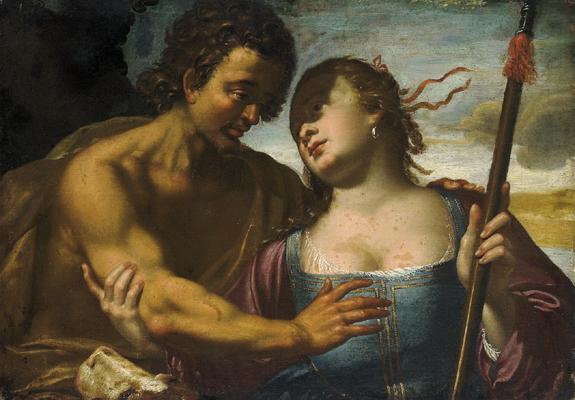
Valentine’s Day stands as one of the most-hated and most-loved holidays. Falling on Feb. 14, couples grow excited as the prospect of a delicious and romantic dinner comes to fruition. For some, a dinner prepared together is romance. For others, an expensive steak dinner is more their forté.
These dinners often come paired with gifts such as chocolate and flowers.
There are those that gag at the idea of everything I just described above. Maybe they struggle to find a Valentine each year or maybe they are far-superior in their romantic capabilities, using each and every day to celebrate their love for their significant other.
Valentine’s Day comes from St. Valentine’s Day, a day meant to celebrate the Catholic church saint. As far as history goes, the Catholic church has recognized at least three saints named Valentine, according to History.com.
Each of those saints comes with a story that sets up the basis for the holiday we celebrate today.
Story 1
In third century Rome, there was a priest named Valentine. Emperor Claudius II, the emperor of Rome at the time, believed that single men made better soldiers compared to soldiers married and raising a family. As a result, the emperor banned young men from getting married. Valentine would not stand for this, and in an effort to fight back he began conducting marriages for young lovers in secret. Sadly, this secret counter didn’t last long and Valentine was put to death by order of Claudius.
Story 2
This story is less romantic so I’ll keep it short. Valentine, unhappy with the treatment of Christians in Roman prisons, took it upon himself to help them escape. Valentine was successful — until he wasn’t. When his actions were discovered by the Roman empire, Valentine was put to death.
Story 3
While a prisoner of the Romans, Valentine sent a greeting note to a girl that he was in love with — supposedly the jailer’s daughter. She would visit him late at night when her father was asleep. They began as friends, but after some time the relationship bubbled into something more. Soon though, the jailor found out and forbade his daughter from visiting the prisoner. Valentine could not endure this lack of communication, so he began writing notes to her. Through various methods of transportation, the notes would make it to the jailer’s daughter and each one was signed “from your Valentine.”
Legend would have it that we celebrate this day to commemorate Valentine’s death, which, according to History.com, occurred around A.D. 270. However, history would have it that the church decided to celebrate Valentine’s Day for a different reason.
In an effort to make the pagan celebration of Lupercalia more aligned with the ideas of the church, the Church decided to place St. Valentine’s Day in the middle of this celebration, which always occurred on Feb. 15.
Lupercalia is a fertility festival that takes place in honor of the Roman god of agriculture, Faunus.
The festival would kick off with a gathering of the Luperci, an group of Roman priests, in a cave believed to be the cave that the Roman founders Romulus and Remus were brought up in.
At this gathering, the priests would sacrifice a goat, which represented fertility, and a dog, which represented purification. The goats would then be stripped of their hides, dipped in blood and brought to the streets. The women would gather in the town and the priests would gently slap each of them with the bloody goat hide. It was believed that doing so would make the women more fertile.
As the festival came to a close, all of the of-age women would place their name in a jar of sorts. The men would then take turns taking a name out of the jar. They would announce the name, the woman would come to them and the two were to remain paired for the year. Often, these pairings would lead to marriage.
At the end of the fifth century, Lupercalia was deemed un-Christian and banned by Pope Gelasius, who declared St. Valentine’s Day be celebrated on Feb. 14. The holiday wasn’t romantic until the middle of the Middle Ages, when men and women began offering each other gifts as a show of affection.
Today, hundreds of years later, Valentine’s Day is celebrated by many countries, such as Denmark, France, South Korea, China, England, Philippines, Italy and of course, the United States of America.
__
For more information or news tips, or if you see an error in this story or have any compliments or concerns, contact editor@unfspinnaker.com.







